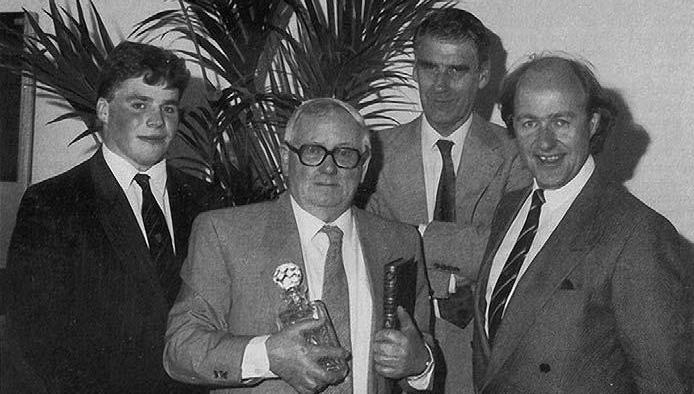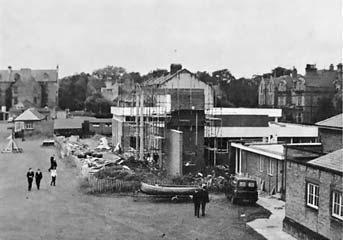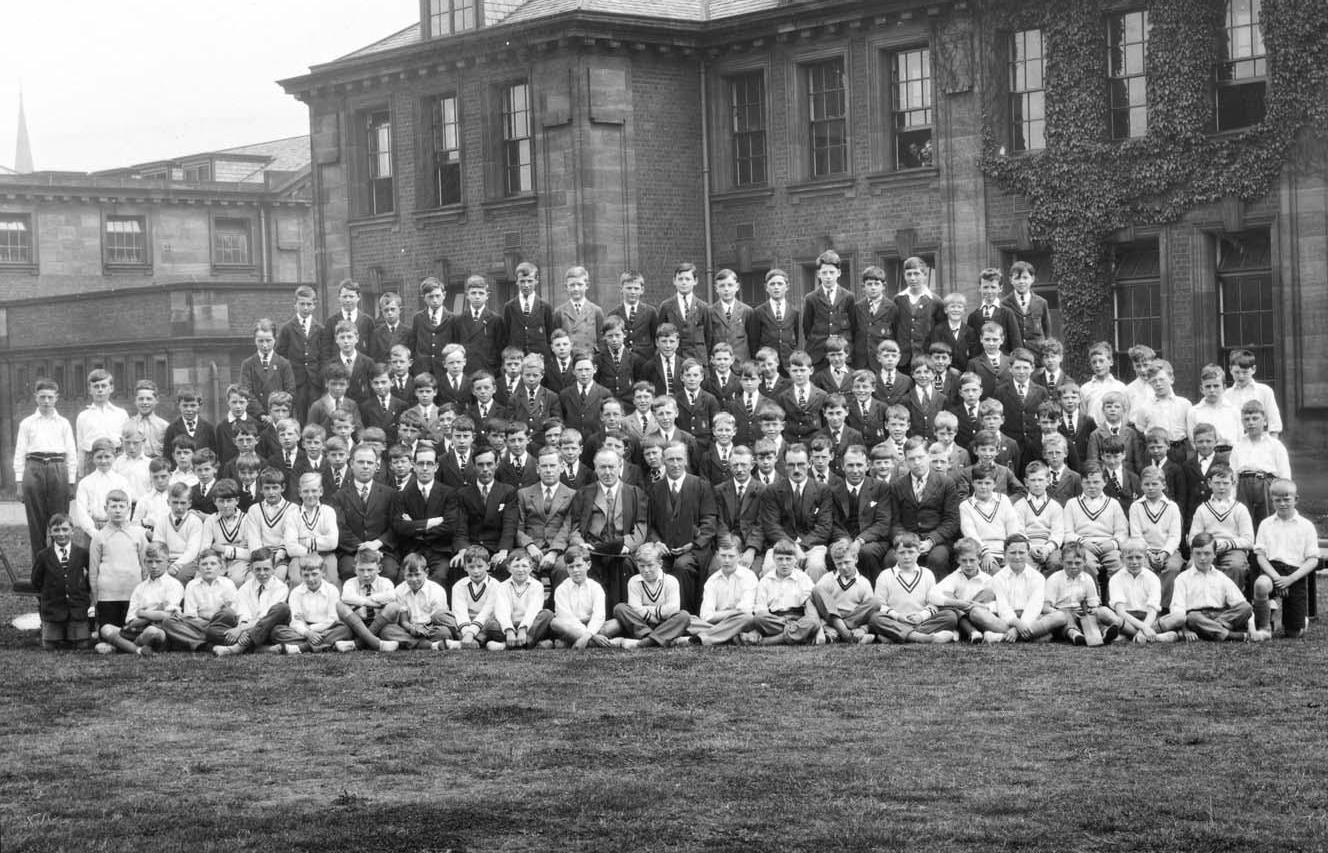
10 minute read
JUNIOR SCHOOL MEMORIES WILLIAM LOUGH/TOM BANFIELD/LEO PEARLMAN
JUNIOR SCHOOL MEMORIES
The Junior School had no separate home until the 1930s, when six classrooms were allocated above the old Dining Hall. The rest, as they say, is history!
Advertisement
The Junior School in 1929. Staff (L-R): Col. ACH Robinson (27-58), Arthur Milner (26-48), unknown, Donald Meakin (24-65), AE Johnson, 2nd Master (1901-36), Ebenezer (‘Eb’) R Thomas, Head (22-48), unknown, HM Owen (23-60 ) TT (Tucker) Anderson (24-60), unknown
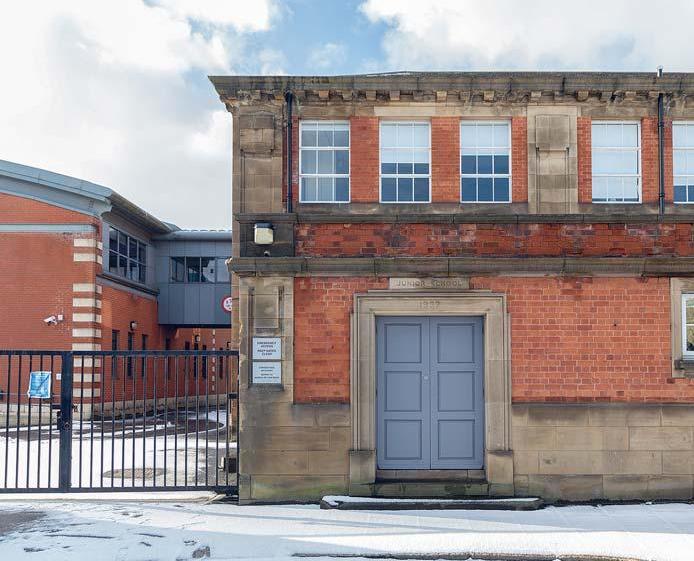
The old Junior School entrance on Eskdale Terrace built in 1937
William Lough (22-33), who taught at the School from 193639, wrote a fascinating chapter contained in the Mains/Tuck School History * about his years at the RGS.
‘I entered the Junior School in September 1922, when I was eight. No doubt my parents had worried as to whether I would pass the entrance examination, but with two brothers at the school and my father having been there in the Rye Hill days, it was taken for granted that I would follow them. I had looked forward to wearing the school cap, with its proud double badge and its coloured star which denoted your house. Living in Jesmond, I was Blue, but I often wished I wore a Brown travelling on the electric train to Jesmond Station, or better still, a Red coming from across the Tyne. Being a Blue seemed too tame in comparison.
We Juniors were taught on the ground floor of the main school. At prayers (not assembly), we sat in the front pews, patrolling prefects to left and right. ‘Come to me after prayers’ meant reporting to the Sixth Form area behind the platform (Organ) and being awarded lines, or if you were arithmetically advanced enough, a cube. In J1, I was taught by Mrs Burns and in J2, by Mrs Akhurst, who later ran her own preparatory school in Osborne Road.
When the male teachers had returned from the War in 1920, the female staff were ‘released’. I remember both as strict but kindly teachers. One of the subjects Mrs Burns taught us was nature study and I have not forgotten, nor failed to observe her strict injunction: ‘never pick up a mouse by its tail!’ After J2, I passed into male hands. My form master in J4 was Arthur William ‘Buggy’ Little (02-33) whom we liked, although he was somewhat short tempered as befitted a Colonel.
It was not difficult if he was in a good mood to start him off on his war experiences. Form Master of J6 and Head of the Junior School, was the formidable Rutty. Above his blackboard, printed in chalk on the wooden frame, was the legendary ‘nonAngli, sed Angeli’ of Pope Gregory the Great. When displeased with us Rutty would sweep up to the board and alter the inscription to ‘non-Angeli sed Angli.’ (not angels but Angles [English])’.
Then Lough goes on to recall some of his teachers, who had taught his father in the Rye Hill days, such as ‘Bulldog’ Stallworthy (1892-1924) and ‘Daddy’ Laws (1892-1928).
The full chapter can be found in Brian Mains and Anthony Tuck’s informative History of the School and its Community (1986) available to purchase at the special price of £7.50 inc. postage. See page 37.
Tom Banfield (51-62) recalls his Junior School years.
I started in the Junior School in 1951, in Mrs Crocker’s class J2B. At that time, the six classrooms were in a self-contained block at the south end of the main school, on the first floor above the school kitchens and dining room. Next was J2A, Miss Joy Pattinson’s (52-84) class – she later became Mrs Knowles of course. Then there was Major RB Bertram’s (30-69) class J3B, which also doubled as the Art Room for the whole Junior School. “Bertie” kept a famous jointed cardboard model human figure to help us when drawing people, glorifying in the name MACF Smith (see below for the full forenames, but do try and remember them for yourself first). Across from the top of the exit stairs, also leading down to the toilets, was J3A taught by Mrs Bainbridge. Finally, the two top classes were J4, taught by the legendary Tucker Anderson (24-60) who was also Head of the Junior School, and J5 Mr Bailey (37-74).
We had our own individual pre-war wooden desks, each with an integral wooden single person bench, a sloping front which lifted up to reveal a storage space, and an ink-well into which we had to dip our nib-pens when writing. The ‘Biro’, then still a trade name, had just been invented and was discouraged - perhaps because of its expense - though we were allowed fountain pens as I recall. All desks faced the blackboard in strict columns, and apart from in the Art Room, there were no work tables and few group activities.
There was an inescapable emphasis on academic progress. We had class exams at the end of every term, and all the marks across the various subjects were added up to rank the whole class in order of exam results. Then the following term we were allocated desks in exact order of rank, with the top of the class seated front right and
Mrs Bainbridge

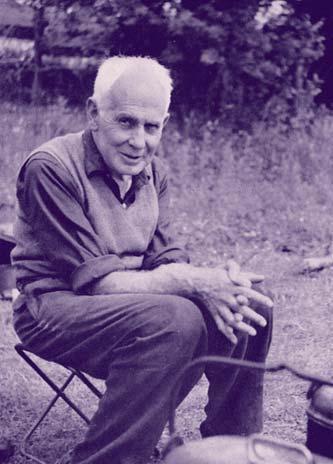
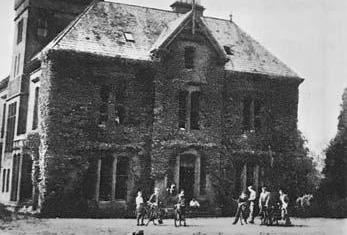
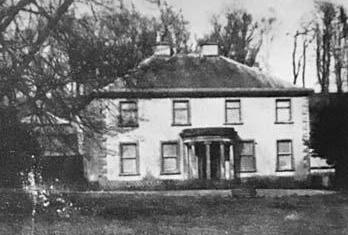
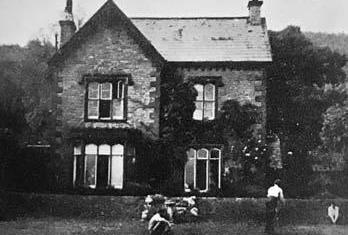
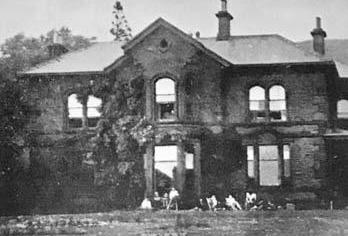
Tucker Anderson Penrith hostels named Beacon Bank, Sandath, Roundthorn and Lynwood
the bottom boy back left (when facing the teacher). Once a week, we had class singing lessons in the theatre, accompanied by Miss Watson (37-62), bellowing out folk songs and spirituals with enthusiasm. I can still recall after nearly 70 years that the Camptown Racetrack was five miles long (doo-dah, doo-dah)! We had gym and swimming lessons of course, and ‘Games’ was football rather than rugby which only the Senior School played. The football pitch was up in the Pinfold, behind a row of trees as far as possible away from the school buildings and right alongside the main A1 London-Edinburgh road. At that time, the national road system was still essentially what it had been in 1939. There was no city bypass, so all the lorries had to go straight down Northumberland Street, then as now the main shopping street, and over the Tyne Bridge along what was still only a 3-lane single carriageway road, crossed by frequent traffic-light junctions and even pelican crossings for pedestrians. But of course there were only four million cars and lorries on UK roads compared with 34 million now.
I can only remember two specific standout events during my three years in the Juniors. On the morning of Wednesday 6 February 1952, we were called out of our six classrooms into the common central area to be solemnly told by Mr Mitchell (4860), resplendent as always in his full length black gown, that the King (George V1) had died in his sleep and that we had a new young Queen. Then in early 1953, the school was visited by Field-Marshal Montgomery (‘Monty’) who, having inspected the CCF, spoke to all the pupils. Unusually, the Junior School was included, and I can remember standing on the balcony at the far end from the organ –though sadly I have absolutely no recollection of what he said.
Physical punishment was an accepted part of the regime. There seemed to be far heavier snow-falls in those days, and the Masters and Prefects did their best to stop snow-ball fights because of the very real danger that there may be a stone concealed in the ‘harmless’ lump of snow. I can still recall on one occasion, Mr Bailey checking virtually every Junior boy for the tell-tale red wet hands that betrayed the culprits - and said hand would immediately be whacked very hard with a gym-shoe to remind us not to do it again.
Happy days, nevertheless – yes, they really were!
P.S. The art puppet’s name was Marmaduke Adolphus Cholmondley Featherstonehaugh Smith.
Field-Marshal Montgomery on his visit to RGS in 1953 with the Lord Mayor and Major RB Bertram MBE

Leo Pearlman (87-97) writes: “Wow, Junior School was truly a lifetime ago! But I do have only enormously fond memories of my time there. The Headmaster at the time was Mr John H Jones (69-90), who always reminded me of a character straight out of a PG Wodehouse novel. I don’t remember him ever raising his voice or shouting at a pupil, but when he got frustrated, he would turn red and his jowls would shake.
The one outing that every Junior School pupil was excited for was the annual away trip to Lindisfarne. Three nights away from parents, staying in a hotel and sharing a room with mates. I remember finding out that mead was alcoholic and so a group of us trying at breakfast to get drunk on mead honey every morning!
However, the highlight of my time at the school was playing rugby. I’d never played team sports before joining RGS and instantly fell in love with everything about the game. It was a free pass to tackling and hitting people, while getting covered in mud and getting to do so with your mates. Plus, they fed us a proper tea after every game and we won trophies for playing. I learnt so much from Mr Wilkinson (75-12), the Junior School rugby coach and have made my own boys play rugby because of the positive experiences I enjoyed”.
Probably the most iconic character in the history of the Junior School is Thomas Tindle Anderson – ‘Tucker’ (24-60). He embodied the concept of ‘the RGS Family’, long before its modern equivalent. Much has been and will continue to be written about this unique and most compassionate man, particularly in his years administering the school’s evacuation to Penrith between 1939 and 1944 and the Race Week Camps across the North and Scotland. As a former colleague wrote in a tribute on his passing in 1972: ‘Tucker’ leaves behind an influence, a presence, that will abide. He was a man gifted with a rare combination of qualities: compassion, understanding, patience, humility, coupled with the persistence of the sea wearing down a rock - We must go forward in faith”, he used to say—and an amazing drive, in pursuing to the end causes in which he believed. He once confessed that, as a magistrate, he found the business of summary jurisdiction difficult. This is exactly what one would have expected of a man so aware of every man’s uniqueness, so sensitive to all the circumstances of a “case”. One cannot do better than to quote the first verse of Christina Rossetti's poem Uphill, favourite lines of his, ‘Does the road wind uphill all the way? Yes, to the very end. Will the day's journey take the whole long day? From morn to night, my friend’. It was, then, supremely by personal example that Thomas Tindle Anderson inspired countless of us—be it confessed, shamed some! - men and boys, to give their utmost and to go on giving, in school, on the playing fields, in holiday camps and harvest camps, in causes such as UNO, UNICEF, Save the Children and The Wild Life Trust, to name but a few, for all of which, and so much more, so many of us remain his debtors, always.
A full tribute by his colleague Lawrence Watson (30-71) can be found on this link: https://bit.ly/3pDjYkS
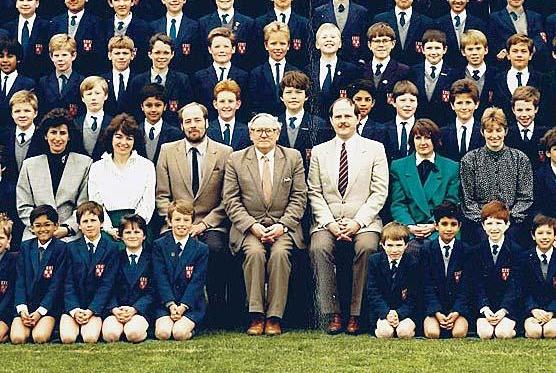
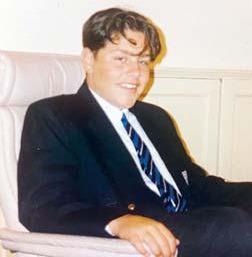
Above: Junior School Staff, 1998: (L-R) Marta Josephs, Val James, Ken Wilkinson, John Humphrey Jones, Keith Hutton, Brenda Joy, Miss Snowball, 1988; Leo Pearlman. Below: Unknown, John H Jones with Alister Cox, unknown
